Related Research Articles
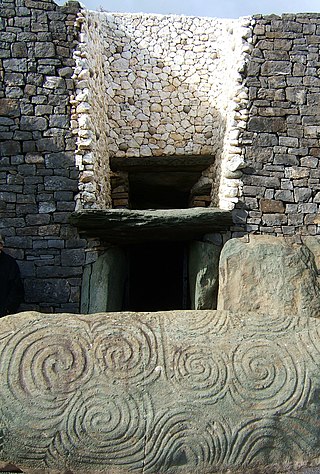
Archaeoastronomy is the interdisciplinary or multidisciplinary study of how people in the past "have understood the phenomena in the sky, how they used these phenomena and what role the sky played in their cultures". Clive Ruggles argues it is misleading to consider archaeoastronomy to be the study of ancient astronomy, as modern astronomy is a scientific discipline, while archaeoastronomy considers symbolically rich cultural interpretations of phenomena in the sky by other cultures. It is often twinned with ethnoastronomy, the anthropological study of skywatching in contemporary societies. Archaeoastronomy is also closely associated with historical astronomy, the use of historical records of heavenly events to answer astronomical problems and the history of astronomy, which uses written records to evaluate past astronomical practice.
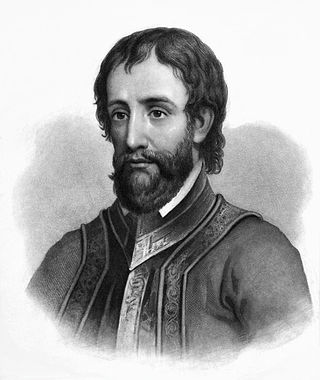
Hernando de Soto was a Spanish explorer and conquistador who was involved in expeditions in Nicaragua and the Yucatan Peninsula. He played an important role in Francisco Pizarro's conquest of the Inca Empire in Peru, but is best known for leading the first European expedition deep into the territory of the modern-day United States. He is the first European documented as having crossed the Mississippi River.
Pachacámac is an archaeological site 40 kilometres (25 mi) southeast of Lima, Peru in the Valley of the Lurín River. The site was first settled around A.D. 200 and was named after the "Earth Maker" creator god Pacha Kamaq. The site flourished for about 1,300 years until the Spanish invaded. Pachacamac covers about 600 hectares of land.
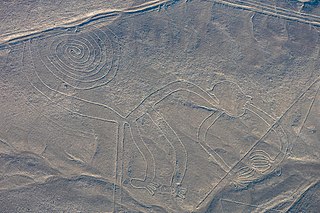
The Nazca lines are a group of over 700 geoglyphs made in the soil of the Nazca Desert in southern Peru. They were created between 500 BC and 500 AD by people making depressions or shallow incisions in the desert floor, removing pebbles and leaving different-colored dirt exposed. There are two major phases of the Nazca lines, Paracas phase, from 400 to 200 BC, and Nazca phase, from 200 BC to 500 AD. In the 21st century, several hundred new figures had been found with the use of drones, and archaeologists believe that there are more to be found.
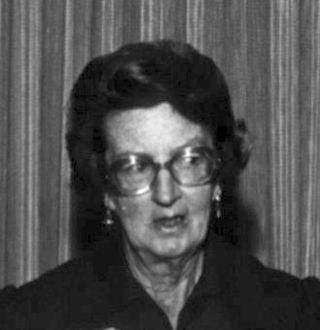
Mary Douglas Leakey, FBA was a British paleoanthropologist who discovered the first fossilised Proconsul skull, an extinct ape which is now believed to be ancestral to humans. She also discovered the robust Zinjanthropus skull at Olduvai Gorge in Tanzania, eastern Africa. For much of her career she worked with her husband, Louis Leakey, at Olduvai Gorge, where they uncovered fossils of ancient hominines and the earliest hominins, as well as the stone tools produced by the latter group. Mary Leakey developed a system for classifying the stone tools found at Olduvai. She discovered the Laetoli footprints, and at the Laetoli site she discovered hominin fossils that were more than 3.75 million years old.

Historically, most medicine wheels follow a similar pattern of a central circle or cluster of stones, surrounded by an outer ring of stones, along with "spokes" radiating from the center out to the surrounding ring. Often, but not always, the spokes may be aligned to the cardinal directions. In other cases, some stones may be aligned with astronomical phenomena. These stone structures may be called "medicine wheels" by the Indigenous nation which built them, or by more specific names in that nation's language.

Benjamin Mazar was a pioneering Israeli historian, recognized as the "dean" of biblical archaeologists. He shared the national passion for the archaeology of Israel that also attracts considerable international interest due to the region's biblical links. He is known for his excavations at the most significant biblical site in Israel: south and south west of the Temple Mount in Jerusalem. In 1932 he conducted the first archaeological excavation under Jewish auspices in Israel at Beit She'arim and in 1948 was the first archaeologist to receive a permit granted by the new State of Israel. Mazar was trained as an Assyriologist and was an expert on biblical history, authoring more than 100 publications on the subject. He developed the field of historical geography of Israel. For decades he served as the chairman of the Israel Exploration Society and of the Archaeological Council of Israel. Between 1951 and 1977, Mazar served as Professor of Biblical History and Archaeology at the Hebrew University of Jerusalem. In 1952 he became Rector of the university and later its president for eight years commencing in 1953.
Below are notable events in archaeology that occurred in 1928.

James Preston Delgado is an American maritime archaeologist, historian, maritime preservation expert, author, television host, and explorer. Delgado is a maritime archaeologist with over four decades of experience in underwater exploration. He has participated in over 100 shipwreck investigations worldwide, including notable sites such as the RMS Titanic, USS Independence (CVL-22), USS Conestoga (AT-54), USS Monitor, USS Arizona (BB-39), USS Nevada (BB-36), Sub Marine Explorer, the buried Gold Rush ships of San Francisco, the atomic bomb test fleet at Bikini Atoll, the slave ship Clotilda, and Kublai Khan's lost fleet from the Mongol invasions of Japan.

Rujm el-Hiri is an ancient stone, or megalithic, structure consisting of concentric circles of stone with a tumulus, a mound of earth and stone, at center. It is located in the Golan Heights some 16 kilometres (9.9 mi) east of the coast of the Sea of Galilee, in the middle of a large plateau covered with hundreds of dolmens, single chamber tombs of stone.
David Hatcher Childress is an American author, and the owner of Adventures Unlimited Press, a publishing house established in 1984 specializing in books on unusual topics such as ancient mysteries, unexplained phenomena, pseudohistory, and historical revisionism. His own works primarily concentrate on pseudoarchaeological and pseudoscientific topics such as "UFOs, secret societies, suppressed technology, cryptozoology [and] conspiracy theory." Childress, having no degree, refers to himself as a "rogue archaeologist".

E-Groups are unique architectural complexes found among a number of ancient Maya settlements. They are central components to the settlement organization of Maya sites and, like many other civic and ceremonial buildings, could have served for astronomical observations. These sites have been discovered in the Maya Lowlands and other regions of Mesoamerica and have been dated to Middle Preclassical to Terminal Classic Period.
Events from the year 1855 in the United Kingdom.
Anthony Richard Birley was a British ancient historian, archaeologist and academic. He was the son of Margaret Isabel (Goodlet) and historian and archaeologist Eric Birley.
Michael Alexander Arbuthnot is an archaeologist, instructor and archaeological filmmaker.

Archaeology or archeology is the study of human activity through the recovery and analysis of material culture. The archaeological record consists of artifacts, architecture, biofacts or ecofacts, sites, and cultural landscapes. Archaeology can be considered both a social science and a branch of the humanities. It is usually considered an independent academic discipline, but may also be classified as part of anthropology, history or geography. The discipline involves surveying, excavation, and eventually analysis of data collected, to learn more about the past. In broad scope, archaeology relies on cross-disciplinary research.
Clive L. N. Ruggles is a British astronomer, archaeologist and academic. He is the author of academic and popular works on the subject. In 1999, he was appointed professor of archaeoastronomy at the School of Archaeology and Ancient History, University of Leicester, when it is believed to have been the only appointed chair for archaeoastronomy among the world's universities. As of 2023, he was Emeritus Professor at this university.
Anthony Francis Aveni is an American academic anthropologist, astronomer, and author, noted in particular for his extensive publications and contributions to the fields of archaeoastronomy and cultural astronomy. He is Russell Colgate Distinguished University Professor of Astronomy and Anthropology and Native American Studies, Emeritus at Colgate University, and he is the author of more than 34 books and 300 research publications that include three cover articles in Science magazine.
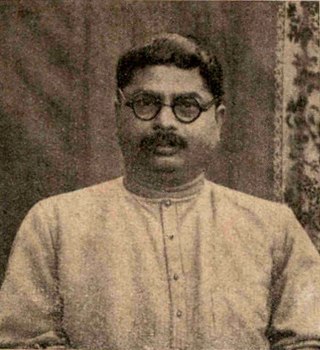
Nani Gopal Majumdar was an Indian archaeologist who is credited with having discovered 62 Indus Valley Civilization sites in Sindh including Chanhudaro.
Kʼàakʼ Chiʼ is a hypothetical archaeological site of the pre-Columbian Maya civilization, proposed by then 15-year old William Gadoury of Saint-Jean-de-Matha, Quebec in 2016. It is located in the state of Campeche in southern Mexico, in the extreme south of the Yucatán Peninsula. The location was determined by overlaying Maya constellations with a map of the Yucatán Peninsula.
References
- ↑ Broom, R. (1938). "The Pleistocene Anthropoid Apes of South Africa". Nature . 142 (3591): 377–339. Bibcode:1938Natur.142..377B. doi: 10.1038/142377a0 .
- ↑ "Aveni, Anthony F. (Anthony Francis), 1938- - Full record view - Libraries Australia Search". nla.gov.au. Retrieved 2017-05-31.